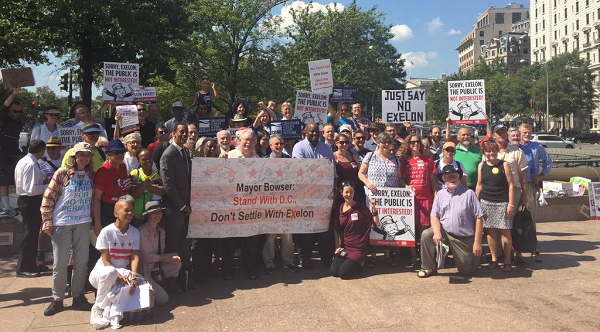Utility industry launches misinformation campaign to erode our solar rights

Electric customers across the country are clamoring for cheaper, cleaner, self-generated electricity. But rather than provide their customers what they want, utilities have decided instead to double-down on their outdated business model. Late last year, electric utility watchdog group Utility Secrets obtained the latest edition of the utility industry’s public relations playbook, known as the “Lexicon Project”. Utility industry trade group the Edison Electric Institute published it to help its member utilities hide their anti-consumer business practices from customers and regulators. The strategies detailed in the document show how monopoly utilities plan to make it harder for us to go solar.
The Lexicon Project documents obtained by Utility Secrets depict a deliberate campaign to discredit customer-owned solar in favor of utility-owned solar. Utilities are now branding rooftop solar as “private solar” and utility-scale solar farms as “universal solar.”
While it is true that most rooftop solar is privately-owned, the benefits solar produces are widely distributed. Excess solar is exported to the grid and consumed nearby. This reduces wear and tear on the grid at large. When families and households go solar, hundreds of thousands of jobs are created (at a faster rate for rooftop installations than from large-scale solar installations). And, more rooftop solar means less demand for electricity from dirty, polluting power plants. These benefits are enjoyed by society at large, not isolated private actors. Furthermore, it is a basic property right—if you want to use your own money on your own property to lower your consumption or make your own heat or electricity, neither the government nor the utility should be able to prevent you from doing so.
The strategies outlined in the Lexicon Project go beyond utility rebranding of solar. They also show how utilities are pushing for policies that undercut customer-owned solar’s ability to compete with electricity delivered from utilities.
Facing declining revenue due to the collapse of industry and stagnant customer demand, many utilities have attempted to increase what they charge their customers. Demand charges are a prime example of this. Demand charges force customers to pay significantly more for their electricity based on a brief period of high consumption. The document urges utilities to rebrand their demand charges as “efficiency rates”.
Reframing demand charges as “efficiency rates” flies in the face of actual efficiency. Now more than ever, customers have access to technologies that help them increase the energy efficiency of their home and decrease the amount of electricity they need to purchase from their utility. Customers are pursuing these options and making the entire electric grid more efficient as a result. But, the imposition of higher demand charges could erode these customer-enabled gains in efficiency. Take going solar as an example. Demand charges harm solar’s economic value because they increase electricity charges that cannot be offset by solar production.
It’s well documented that rooftop solar makes the grid stronger and more efficient. So, if prospective solar owners are discouraged from going solar due to the backwards economics of demand charges, the grid becomes less robust and less efficient. That utilities are being encouraged to cast demand charges in an “efficiency” light shows a profound misunderstanding of grid dynamics and the true customer experience.
Electric customers who receive their electricity from a monopoly utility do have recourse to fight against their utility’s anti-competitive actions. But even here, the utility industry is eager to mislead customers about the process.
Known as rate cases, these proceedings have traditionally been all arcane hard to follow inside-game. Utilities pre-determine the rates they want to charge, present them to their state’s public service commission in thousand page long convoluted and jargon filled documents, and receive often rubber stamp approvals.
While rate cases are conducted at state agencies and therefore in theory open to public input and scrutiny, the general public’s ability to protect their interests in these proceedings is severely limited. Rate cases are highly technical in nature, rarely publicized, and difficult to for the public to participate in. Plus, utilities wield tremendous influence over commissioners and commission staff. (Check out this story from South Carolina for a detailed example of how utilities spent tens of thousands of dollars to wine and dine the people charged with regulating them).
Despite this reality, the Lexicon Project urges utilities to start referring to their rate cases as “a public process where independent state commissions determine energy rates”.
This attempted utility rebranding effort should serve as a wake-up call to all utility customers, but particularly to solar supporters. The monopoly utilities see solar as a clear threat and will do everything they can to stop it from hurting their bottom line. It’s time solar supporters stand up for our rights. Click here to learn how you can take action to support solar.
